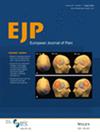Sex Differences in the Effects of Early Life Stressors in a Rat Model of Myofascial Low Back Pain
Abstract
Background
Chronic primary low back pain (cpLBP) is prevalent worldwide. Adverse childhood experiences (ACEs) increase the risk of cpLBP. Here, we explored ACEs as a predisposing factor for adult cpLBP using a rodent model.
Methods
During adolescence, male and female Wistar rats underwent repeated restraint stress (RS) for one hour daily for 12 days or social isolation (SI) for 29 days; controls were handled daily. In adulthood, acute cpLBP was mimicked by NGF or saline injections into the lumbar multifidus muscle. Deep muscular hypersensitivity was assessed using the pressure pain threshold (PPT) of multifidus (MF) and gastrocnemius muscles (GS). Cutaneous mechanical hypersensitivity was measured with paw withdrawal threshold (PWT).
Results
SI had smaller effects than RS in adolescence (d = −0.87 vs. −1.20) and adulthood (d = −0.33 vs. −0.48). RS and SI had a moderate impact in adolescent females (Cohen's d = −0.69), while males experienced a strong sensitisation (d = −1.42), with persistence into adulthood only in males (d = −0.52). Sensitivity to change was lower for PPT of GS (d = −0.71) than PPT of MF (d = −1.09) or PWT (d = −1.17). PPT of the injected MF dropped in stressed females both to saline (d = −0.447) and NGF (d = −0.568) but not in males. Both early life stress models induced immediate muscular and cutaneous hypersensitivity that recovered partly in adulthood.
Conclusions
Males were more susceptible to manifest sensitisation by stress than females, whereas females exhibited a memory trace (latent sensitisation), causing hyperalgesia upon the second hit in adulthood. The differential stress sensitivity may contribute to the higher prevalence of cpLBP in females.
Significance Statement
Chronic primary low back pain (cpLBP) is prevalent worldwide, particularly in women. Adverse childhood experiences (ACEs) increase the risk of cpLBP. Using a rat model of cpLBP and two early life stressors, we report that male rats were more susceptible to manifest sensitisation by stress, whereas female rats exhibited a memory trace, causing behavioural signs of hyperalgesia upon the second hit in adulthood (noxious muscle stimulation). The differential stress sensitivity may contribute to the higher prevalence of cpLBP in women.


 求助内容:
求助内容: 应助结果提醒方式:
应助结果提醒方式:


